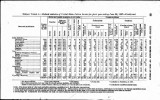| Title |
Annual Report of the Commissioner of Indian Affairs - 1927 |
| Subject |
Indian reservations; Federal government; Indians of North America; Maps; Work; Livestock; Food; Indians of North America--Education; Land use; Allotment of land; Treaties; Agriculture; Railroads; Timber; Health; Art; Religion; Indians of North America--Social life and customs; Natural resources; Ute Indians--History; Culture; Education; Courts; Annuities; Indigenous peoples--North America |
| Keywords |
Annual Report; Indian Agency; Reservations; Land Rights; Mining; Tribal Funds; Native Americans |
| Publisher |
Digitized by J. Willard Marriott Library, University of Utah |
| Tribe |
Ute |
| Language |
eng |
| Description |
Excerpts concerning Utah from the Annual Report of the Commissioner of Indian Affairs - Courtesy of the University of Wisconsin Digital Collections. The Secretary of the Interior expresses his dissatisfaction with the state of health, finance, and education among American Indians. He discusses in greater detail the treatment of diseases such as tuberculosis, the sale of Indian land, suits brought against the United States over land rights, and the use and construction of roads and bridges. The Secretary also provides charts with demographic data about American Indian reservations and schools |
| Type |
Text |
| Coverage |
Washington (D.C.) |
| Format |
application/pdf |
| Rights |
Digital Image © 2011 America West Center. All Rights Reserved |
| ARK |
ark:/87278/s6rn64kf |
| Creator |
Commissioner of Indian Affairs; Work, Hubert, 1860-1942 |
| Date |
1927 |
| Spatial Coverage |
Utah; Washington (D.C.) |
| Setname |
uaida_main |
| ID |
377591 |
| Reference URL |
https://collections.lib.utah.edu/ark:/87278/s6rn64kf |




























































